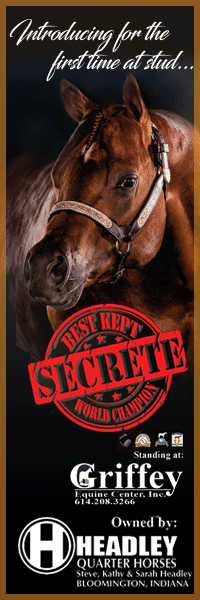Why Selenium and Vitamin E Are Given Together

Photo Credit: Brittany Bevis
By: Dr. Eleanor Kellon
Vitamin E and selenium are nutrients familiar to most horsepeople. They are among the most common deficiencies in unsupplemented animals – and also the only two where deficiency diseases are still routinely seen.
E and Se are often supplemented together, but contrary to popular belief they do not actually work together, nor is their absorption from the intestinal tract connected in any way.
E and Se are both important antioxidants but are active in different portions of the cells. E works to shield fats within membranes surrounding the cell and structures within the cell from oxidative damage. Se, as part of the glutathione peroxidase enzymes, helps protect from free radicals in the internal watery portions of cells. Free radicals are a by-product of cells generating energy for work or cell division and of immune system activity. Processing toxins can also generate free radicals.
Vitamin E and selenium status is documented to significantly impact:
- Nervous system
- Muscular function
- Fertility/sperm quality
- Antibody levels in colostrum
- Immune function
- Red blood cell integrity in exercising horses
- Heart health
Selenium is also integral to the enzyme which converts the inactive form of thyroid hormone (T4) to the active T3.
In most areas of the US and Canada, and many other places around the world, selenium is barely adequate to frankly deficient. Horses not being maintained on pasture have extremely low levels of vitamin E in unsupplemented diets. E levels in fresh grass are good but not hay or dried feeds. E added to feeds or multi-ingredient supplements often acts more like a natural preservative than a supplement because even stabilized forms of the vitamin can break down easily.
Horses absorb inorganic selenium (e.g. sodium selenate) well but absorption of this form may be reduced by high levels of competing minerals in the diet. For this reason, some or all of the selenium supplement should be in the form of high selenium yeast.
Because E is a fat soluble vitamin it is best given dissolved in fat. If your supplement is powdered E, or an E-Se combination mix it into some oil or sprinkle it on top of oil that is top dressed on the feed.
E and selenium are two of the most important and the most often deficient nutrients in the horse’s diet. Make sure your horse’s intake is adequate. If unsure if your diet is supplying sufficient amounts, request blood tests from your veterinarian.
About Dr. Kellon
Dr. Eleanor Kellon, staff veterinary specialist for Uckele Health & Nutrition, is an established authority in the field of equine nutrition for over 30 years, and a founding member and leader of the Equine Cushings and Insulin Resistance (ECIR) group, whose mission is to improve the welfare of horses with metabolic disorders via integration of research and real-life clinical experience. Prevention of laminitis is the ultimate goal. www.ecirhorse.org
Uckele Health & Nutrition, maker of CocoSoya, is an innovation-driven health company committed to making people and their animals healthier. On the leading edge of nutritional science and technology for over 50 years, Uckele formulates and manufactures a full spectrum of quality nutritional supplements incorporating the latest nutritional advances. www.uckele.com.










